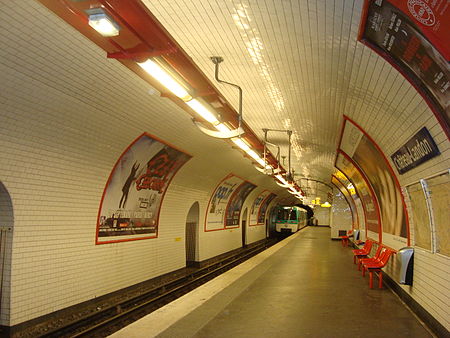Château-Landon (Paris Métro)

Château-Landon (French pronunciation: [ʃɑto lɑ̃dɔ̃]) is a station on line 7 of the Paris Métro in the 10th arrondissement. The station was opened on 5 November 1910 as part of the first section of the line from Opéra to Porte de la Villette. It is named after the Rue Château-Landon, a street which was built on property once owned by a family from Château-Landon in Seine-et-Marne. The street is on the alignment of the Roman road from Lutetia towards the North via Saint-Denis. It was planned to become the end of the future new line (created from the merger of line 3bis and line 7bis). It is also planned to build an underground pedestrian connection to the RER Line E station of Magenta, which would also link to the Gare du Nord and the Gare de l'Est.
Excerpt from the Wikipedia article Château-Landon (Paris Métro) (License: CC BY-SA 3.0, Authors, Images).Château-Landon (Paris Métro)
Rue du Faubourg Saint-Martin, Paris 10th Arrondissement (Paris)
Geographical coordinates (GPS) Address Phone number Nearby Places Show on map
Geographical coordinates (GPS)
| Latitude | Longitude |
|---|---|
| N 48.87846 ° | E 2.362071 ° |
Address
La pause traiteur
Rue du Faubourg Saint-Martin 186
75010 Paris, 10th Arrondissement (Paris)
Ile-de-France, France
Open on Google Maps







